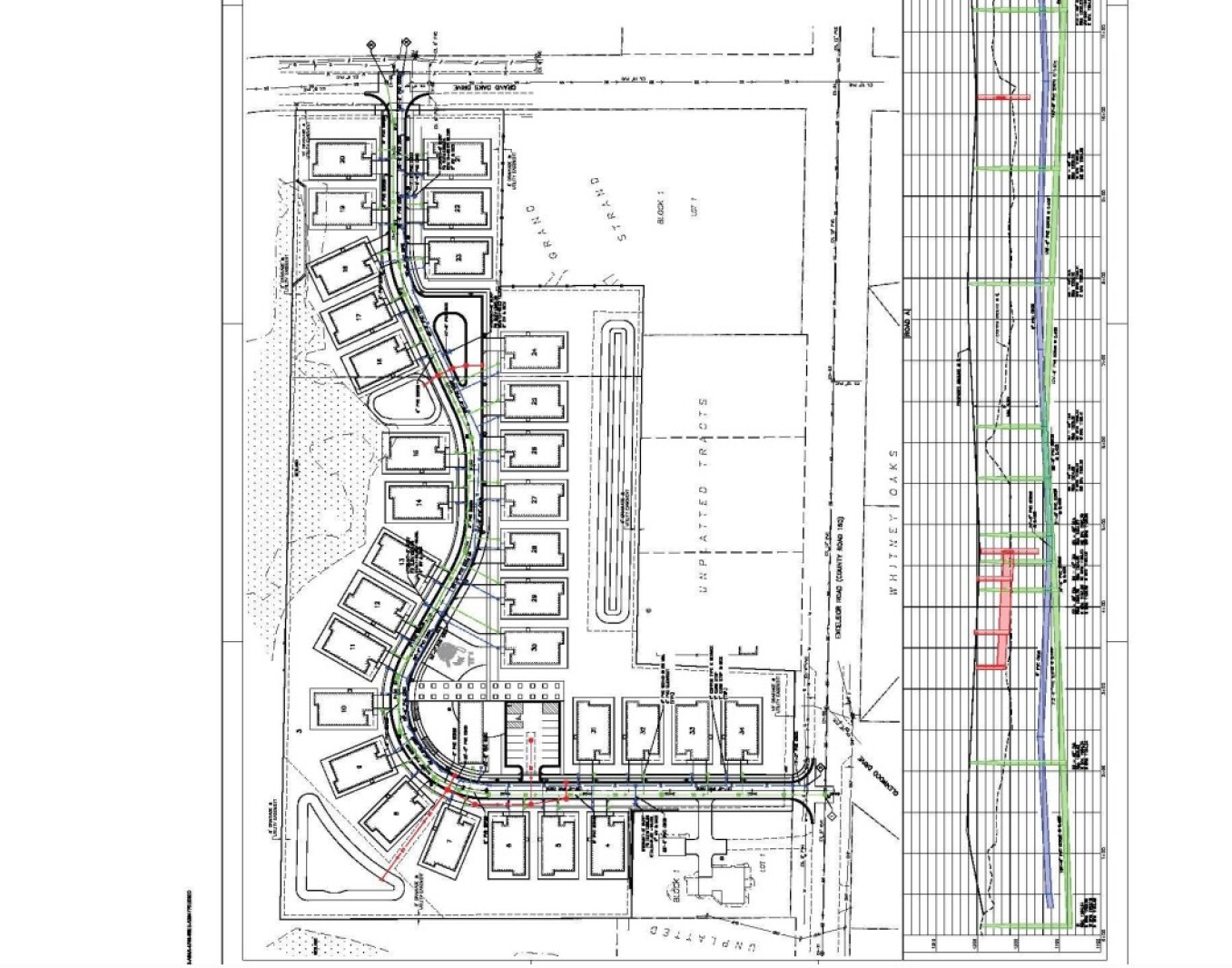Report on Industrial Fire at General Motors Facility and Sustainable Development Implications
1.0 Incident Overview
A significant industrial fire occurred on Wednesday evening at the General Motors (GM) Advanced Design Center in Pasadena. The incident necessitated a large-scale emergency response and highlighted critical challenges related to industrial safety, hazardous materials, and their intersection with the United Nations Sustainable Development Goals (SDGs).
- Location: General Motors Advanced Design Center, 600 block of Sierra Madre Villa Avenue, Pasadena.
- Time of Initial Report: 5:50 p.m.
- Response Level: Four-alarm fire, mobilizing over 100 firefighters and a specialized hazardous materials team.
- Incident Containment: The fire was reported as knocked down at 7:22 p.m.
- Initial Damage Assessment: GM reported the fire was contained to a single concept vehicle.
2.0 Analysis of Sustainable Development Goal (SDG) Impacts
The fire at the GM facility, a hub for automotive innovation, brings several SDGs into sharp focus, particularly concerning the risks and responsibilities associated with technological advancement.
2.1 SDG 3: Good Health and Well-being & SDG 11: Sustainable Cities and Communities
The incident posed direct risks to human health and tested municipal emergency preparedness, key components of SDG 3 and SDG 11.
- First Responder Safety: A firefighter was temporarily trapped inside the structure, issuing a mayday call before being safely rescued. This underscores the occupational hazards faced by emergency personnel dealing with modern industrial fires.
- Community Safety and Resilience: The scale of the fire, one of the largest in Pasadena’s recent history, required a substantial mobilization of municipal resources, testing the city’s capacity to manage complex industrial emergencies and protect its community.
- Hazardous Emissions: The combustion of lithium-ion batteries releases toxic gases, including hydrogen fluoride, posing a significant health risk to firefighters and potentially the surrounding community, directly challenging the objective of ensuring healthy lives.
2.2 SDG 7: Affordable and Clean Energy & SDG 9: Industry, Innovation, and Infrastructure
The fire’s source, reportedly involving lithium-ion batteries in a concept vehicle, links the event directly to the global transition towards clean energy and the infrastructure required to support it.
- Challenges in Clean Energy Technology: Lithium-ion batteries are fundamental to the electric vehicle market and the broader clean energy transition (SDG 7). This incident highlights the inherent fire risks and the specialized knowledge required to manage them, as water cannot be used for extinguishment.
- Resilience of Innovative Infrastructure: The fire occurred at a $71 million state-of-the-art facility dedicated to advanced design. This event stresses the need for industrial infrastructure (SDG 9) to be not only innovative but also resilient and equipped with advanced safety protocols to manage the hazards of new technologies.
2.3 SDG 12: Responsible Consumption and Production
This event serves as a critical reminder of the importance of managing hazardous materials throughout their lifecycle, a core tenet of SDG 12.
- Lifecycle Management of Hazardous Materials: The difficulty in extinguishing the lithium-ion battery fire emphasizes the need for responsible management, from design and production to use and emergency response.
- Environmental Safety: Ensuring that the pursuit of sustainable technologies like electric vehicles includes robust safety and containment strategies is crucial for achieving environmentally sound production patterns.
3.0 Conclusion and Recommendations
The investigation into the cause of the fire is ongoing. However, the incident provides valuable insights for aligning industrial practices with sustainable development principles.
- Enhance Safety Protocols: A thorough review of safety and fire suppression protocols for facilities handling large-format lithium-ion batteries is necessary to protect workers, first responders, and communities (SDG 3, SDG 11).
- Integrate SDG Risks into Innovation: As industries innovate to meet climate and energy goals (SDG 7, SDG 13), a holistic risk assessment that incorporates health, safety, and infrastructure resilience (SDG 3, SDG 9) must be standard practice.
- Promote Specialized Training: Continued investment in specialized training for emergency responders on handling fires involving new energy technologies is essential for building resilient and sustainable communities (SDG 11).
Analysis of Sustainable Development Goals in the Article
1. Which SDGs are addressed or connected to the issues highlighted in the article?
The article discusses a major industrial fire, the emergency response, the involvement of hazardous materials, and the impact on infrastructure and personnel. Based on these themes, the following Sustainable Development Goals (SDGs) are relevant:
- SDG 3: Good Health and Well-being: This goal is relevant due to the health risks posed by the fire, including the release of toxic gases from burning lithium-ion batteries and the immediate danger to firefighters.
- SDG 8: Decent Work and Economic Growth: The article touches upon occupational safety, a key component of decent work, by highlighting the dangerous situation faced by firefighters, one of whom was trapped.
- SDG 9: Industry, Innovation, and Infrastructure: The fire occurred at a modern, multi-million dollar industrial facility, raising issues related to the resilience and safety of industrial infrastructure, especially those handling new technologies.
- SDG 11: Sustainable Cities and Communities: This goal is connected through the lens of urban disaster management, emergency response capacity, and the environmental impact of such incidents on the city.
- SDG 12: Responsible Consumption and Production: The challenges of managing hazardous materials, specifically lithium-ion batteries, throughout their lifecycle, including disposal and accidents, directly relate to this goal.
2. What specific targets under those SDGs can be identified based on the article’s content?
Several specific SDG targets can be linked to the information provided in the article:
- Target 3.9: “By 2030, substantially reduce the number of deaths and illnesses from hazardous chemicals and air, water and soil pollution and contamination.”
- Explanation: The article explicitly states that “Large lithium ion battery fires release toxic gases such as hydrogen fluoride,” which poses a direct health risk from chemical pollution to firefighters and potentially the surrounding community.
- Target 8.8: “Protect labour rights and promote safe and secure working environments for all workers…”
- Explanation: The incident where “a firefighter was trapped in the structure amid the blaze and sent out a mayday call” directly highlights the critical importance of ensuring safe working environments for emergency responders.
- Target 9.1: “Develop quality, reliable, sustainable and resilient infrastructure… to support economic development and human well-being.”
- Explanation: The fire at the “$71 million” General Motors Advanced Design Center, a significant piece of industrial infrastructure, questions the resilience of such facilities against accidents involving modern technologies like lithium-ion batteries.
- Target 11.5: “By 2030, significantly reduce the number of deaths and the number of people affected and substantially decrease the direct economic losses… caused by disasters…”
- Explanation: The fire is described as a localized disaster (“one of the largest structure fires we’ve had in Pasadena in many, many years”). The trapped firefighter represents a “person affected,” and the damage to a major industrial facility represents a direct economic loss.
- Target 12.4: “By 2020, achieve the environmentally sound management of chemicals and all wastes throughout their life cycle… and significantly reduce their release to air, water and soil…”
- Explanation: The fire was complicated by the presence of “lithium ion batteries burning.” The need for a “hazardous materials crew” and specialized firefighting techniques underscores the challenges in the sound management of these chemical-heavy products, especially during emergencies.
3. Are there any indicators mentioned or implied in the article that can be used to measure progress towards the identified targets?
Yes, the article contains several pieces of information that can serve as qualitative or quantitative indicators for measuring progress:
- Indicator for Target 11.5 (Disaster Impact): The scale of the emergency response, “More than 100 firefighters” and a “four-alarm fire,” serves as an indicator of the disaster’s magnitude. The number of people directly endangered, “a firefighter was trapped,” is a direct measure of the human impact.
- Indicator for Target 8.8 (Occupational Safety): The “mayday call” is a specific indicator of a life-threatening event in the workplace, highlighting a failure or challenge in safety protocols. The successful rescue indicates the effectiveness of response measures.
- Indicator for Target 3.9 & 12.4 (Hazardous Materials Management): The identification of the specific hazardous material (“lithium ion batteries”) and the resulting pollutant (“toxic gases such as hydrogen fluoride”) are key indicators for tracking incidents related to chemical and waste management.
- Indicator for Disaster Preparedness (related to multiple targets): The mention that “Firefighters on scene have trained in scenarios like this” is a qualitative indicator of the city’s preparedness and capacity to manage complex, modern hazards, contributing to community resilience (SDG 11) and health risk management (SDG 3).
- Indicator for Target 9.1 & 11.5 (Economic Losses): The value of the facility, in which GM “invested more than $71 million,” provides a baseline for assessing the potential direct economic losses from the disaster, a key metric for these targets.
4. Table of SDGs, Targets, and Indicators
| SDGs | Targets | Indicators Identified in the Article |
|---|---|---|
| SDG 3: Good Health and Well-being | 3.9: Reduce illnesses from hazardous chemicals and pollution. | Release of “toxic gases such as hydrogen fluoride” from burning lithium-ion batteries. |
| SDG 8: Decent Work and Economic Growth | 8.8: Promote safe and secure working environments. | Incident of a firefighter being trapped and issuing a “mayday call.” |
| SDG 9: Industry, Innovation, and Infrastructure | 9.1: Develop quality, reliable, and resilient infrastructure. | A major fire at a modern “$71 million” industrial design facility. |
| SDG 11: Sustainable Cities and Communities | 11.5: Reduce the number of people affected and economic losses from disasters. | Mobilization of “more than 100 firefighters”; one firefighter trapped; description as a “four-alarm fire.” |
| SDG 12: Responsible Consumption and Production | 12.4: Environmentally sound management of chemicals and wastes. | The fire involved “lithium ion batteries burning,” requiring a specialized “hazardous materials crew” and non-water-based extinguishing methods. |
Source: latimes.com







